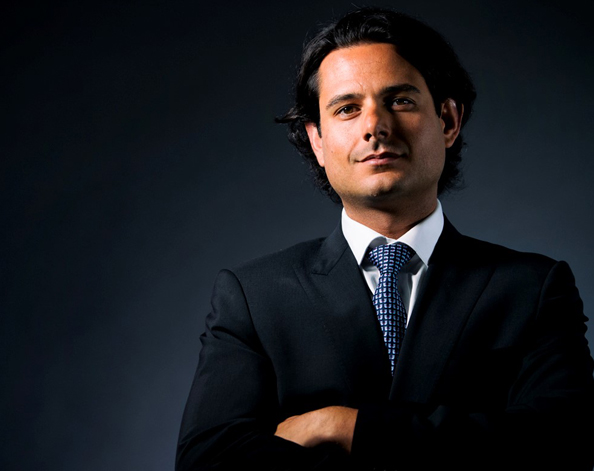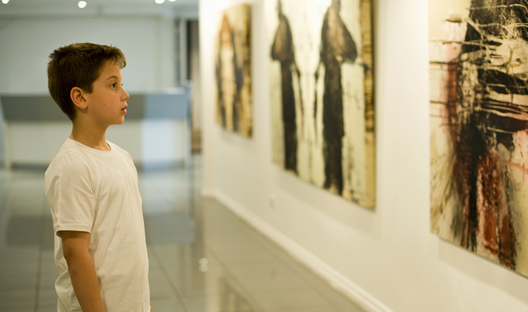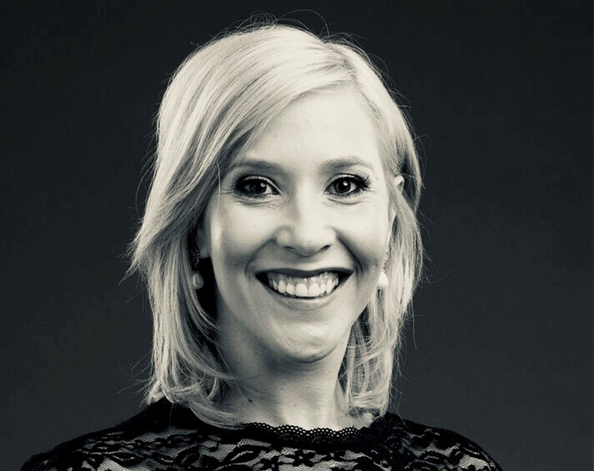Get Focus insights straight to your inbox
As South Africa’s art market has matured, many private art collectors find themselves in the enviable position of considering the legacy of their ever-expanding collections. This pertains not only to the long-term value of the works, where best to display and house them or share them with the public, but also what you could term ‘legacy planning’ for the more valuable works.
After her tragic death at the age of 39, well-known Johannesburg art collector Nwabisa Xayiya's collection went to auction at Aspire Art Auctions. The high-profile, record-breaking 2021 auction brought into focus the fact that even young private art collectors with sizeable collections of valuable works need to consider how best to disperse them once they pass on.

Nwabisa Xayiya’s collection comprised over 300 works by well-known African artists including William Kentridge, Nicholas Hlobo, Ernest Mancoba and George Pemba amongst others. The top lot by value was Kentridge's drawing Landscape with crouching figure which realised R2,048,400.
Many estates end up at auction. In this instance it wasn’t necessarily a negative outcome for the public or the legacy of her collection. A dedicated sale such as this not only resulted in a well-attended exhibition and the production of a researched catalogue, but also dispelled notions that young black collectors aren’t interested in the likes of Pierneef.
“For me, what was most compelling (about this sale) and significant for our market particularly, is Nwabisa’s importance, and influence, as a cultural ambassador and taste-maker. The whole art-industry needs collectors and benefactors. Nwabisa was remarkable in this regard, and I think she was a strong influence on many of her contemporaries, and a younger generation of burgeoning collectors, to start collecting,” says Ruarc Peffers, Senior Specialist and Managing Director at Aspire.
Not all collections can be sold at auction
It is, however, very rare that an entire collection can be sold at auction, “unless it is exceptionally good and well curated,” adds Peffers.
If your collection is made up of works produced by relatively young artists or those mid-career artists without an auction track record, then the full value of those works might not be realised or they might not make it to auction at all, leaving your heirs, or family members, with works they might struggle to dispose of, should they not appeal to their taste.
“The auction market is quite particular about the artists it presents. This is a function of the fact that values at auction are based on precedent. Historical sales of an artist’s work are used as a barometer to benchmark a projected future value for the sale of a comparable work,” says Peffers.
“In instances where an artist has no previous auction sales precedent, the value ascribed is usually quite low, and it is left to the market to set the value level by bidding on the artwork up to a level at which it is comfortable to buy.”
While there will be a lot of buzz around a collection being sold at auction, which does generate a lasting legacy of it, largely in the form of a digital publication, public access to the actual works will be limited and the works will once again disappear, unless a museum happens to snap them up. However, given limited or virtually non-existent acquisition budgets some of them have, this might not be likely.

The auction market is quite particular about the artists it presents. This is a function of the fact that values at auction are based on precedent.
Donation of art collections to museums enhances their provenance
Donating works to museums and/or lending works to them is by far the most ideal way to generate a legacy around them.
“Lending art is a great way for the public to see artworks which have been out of the public eye for a long period of time,” says Bradley Seaward, investment manager at Investec Wealth & Investment.
When artworks are lent to museums for exhibitions, this can add to their provenance, contributing to the artworks’ value or social or artistic importance. “Exposure through exhibitions (temporary or permanent) brings the work to the attention of a wider range of critics and collectors, who can enhance the value of that work or artist,” says Seaward.

Lending art is a great way for the public to see artworks which have been out of the public eye for a long period of time.
The pros and cons of bequeathing artworks to museums
In South Africa there are three types of museums. There are public ones, such as the Joburg Art Gallery or the SA National Art Gallery in Cape Town. Private art museums include Norval Art Foundation, A4, the Rupert Museum and the Zeitz Museum of Contemporary Africa Art (which is a hybrid public/private example). There are many university museums too, such as the Wits Art Museum and The Javett, and there are university art collections too.
When weighing up the pros and cons of donating or bequeathing artworks to these different institutions it is worth bearing in mind that the older collections naturally boast a greater amount of works and as such those institutions may be more selective about their choices – there is limited space for storage.
The works may disappear for good into their overpopulated storeroom, never to be seen again. This might be the case with public museums; however, they have limited financial means to acquire new works and therefore rely on donations.
“Donations have been critically important in enabling the Iziko Museums to expand the collections during some particularly lean times and we are grateful for the support received from the public,” observes Paul Tichmann, director of Collections and Digitisation at Iziko Museums.
As our public institutions don’t deaccession (sell) works either, it means that artworks bequeathed to them will remain in their collection for perpetuity.
“In order to deaccession any of the works, Iziko Museums has to obtain permission from the Minister of Sport, Arts and Culture. The general rule is to offer works to other museums in the event that we are unable to accommodate or care for the works,” adds Tichmann.
The state doesn’t have a marvellous track record with regards to the upkeep of public art buildings – think of JAG’s famous leaking roof, which led to the closure of its bottom level galleries for an extended period – and indeed as the fire at Cape Town’s parliament demonstrated, security and fire-prevention at important state buildings is lax. As such works donated to public museums are not guaranteed to be out of harm’s way.

Key factors to consider when leaving art to your heirs
From taxes to insurance and maintenance costs, here's what art collectors should consider when leaving their art collections as a legacy to their loved ones.
How private museums assess a bequest request
Norval Foundation is a private museum, and it is renowned for its state-of-the-art storage facilities – said to be best in the country. As a new entity – established in 2018 – the Norval Trust only boasts a small collection – its curators have access to the Homestead Collection, which is owned by Louis Norval and his family.
As such they rely on loans such for their exhibition programme and regularly loan works from Iziko SA National Gallery, says Owen Martin, Norval Foundation’s director. As they are a young institution, they haven’t received many donations yet.
“People have been waiting and watching. Someone has recently bequeathed us quite a substantial collection and we have been approached with smaller donations but we decided against it as the works did not fit our outlook. We are cautious. We are figuring things out,” says Martin.
However, they are clear on how they would go about assessing and finalising a bequest.
“The curatorial and collections team would undertake research on the specific artwork(s) and the artist(s) practice(s) as well as the proposed cost of caring for the work(s) using our existing storage system over a long duration.
“If approved, it then goes to the director for approval and finally the chairman of the board for approval. If it’s donated to Norval Foundation, it would form part of our collection, which is completely independent of the Homestead Collection (belonging to the Norval family),” explains Martin.
University museums and collections are equally picky about the type of donations they are willing to accept. In their list of criteria, the University of Cape Town’s Works of Art Collection (WOAC) suggest that they are particularly interested in major works or works of “demonstrable excellence by SA and African artists and performers and by emerging SA and African artists”.
Donating or loaning works to university museums or collections will deepen the legacy of a collection as the works might not only find their way into exhibitions and be regularly displayed on campus, but will become a valuable resource for students and academics.
What are the tax benefits of donating art collections?
There are also tax benefits to be had from donating art to the above-mentioned institutions.
“As we know, art can be a valuable asset. However, SARS knows this too and that is the reason why art attracts estate duty, when held personally. On death, the art would be valued and subject to an estate duty of between 20% and 25%,” advises Rene van Zyl, Joint head, Investec Tax & Fiduciary.
“However, art collectors often consider leaving their art collection (or any part thereof) to a registered public benefit organisation, the State or any local authority. Such a bequest would likely be exempt from estate duty.”
To take advantage of the tax benefit outlined above, the public benefit organisation must be a section 18A registered organisation, she urges.

Art can be a valuable asset. However, SARS knows this too and that is the reason why art attracts estate duty, when held personally.
Selling your art on the other hand does attract income tax as capital gains tax may be applicable, says Van Zyl.
“One would always need to consider the intention of the art collector, which is one of the fundamental principles used in determining the nature of any income or assets for tax purposes.”
Ultimately, only works deemed valuable due to their social or artistic significance will be accepted by the gatekeepers of these art museums. As such, each work a collector acquires needs to be considered with these characteristics in mind. Collectors can benefit from consulting specialists if they want to create a collection that will have a long-lasting legacy.
“This is a rarefied and specialised industry, and to successfully achieve your aims, the requisite levels of planning and strategising are necessary, and this is contingent on the mandatory skills, knowledge and networks to be realised. To best achieve these goals, find the best specialist, or specialist team, to partner with,” advises Peffers.

